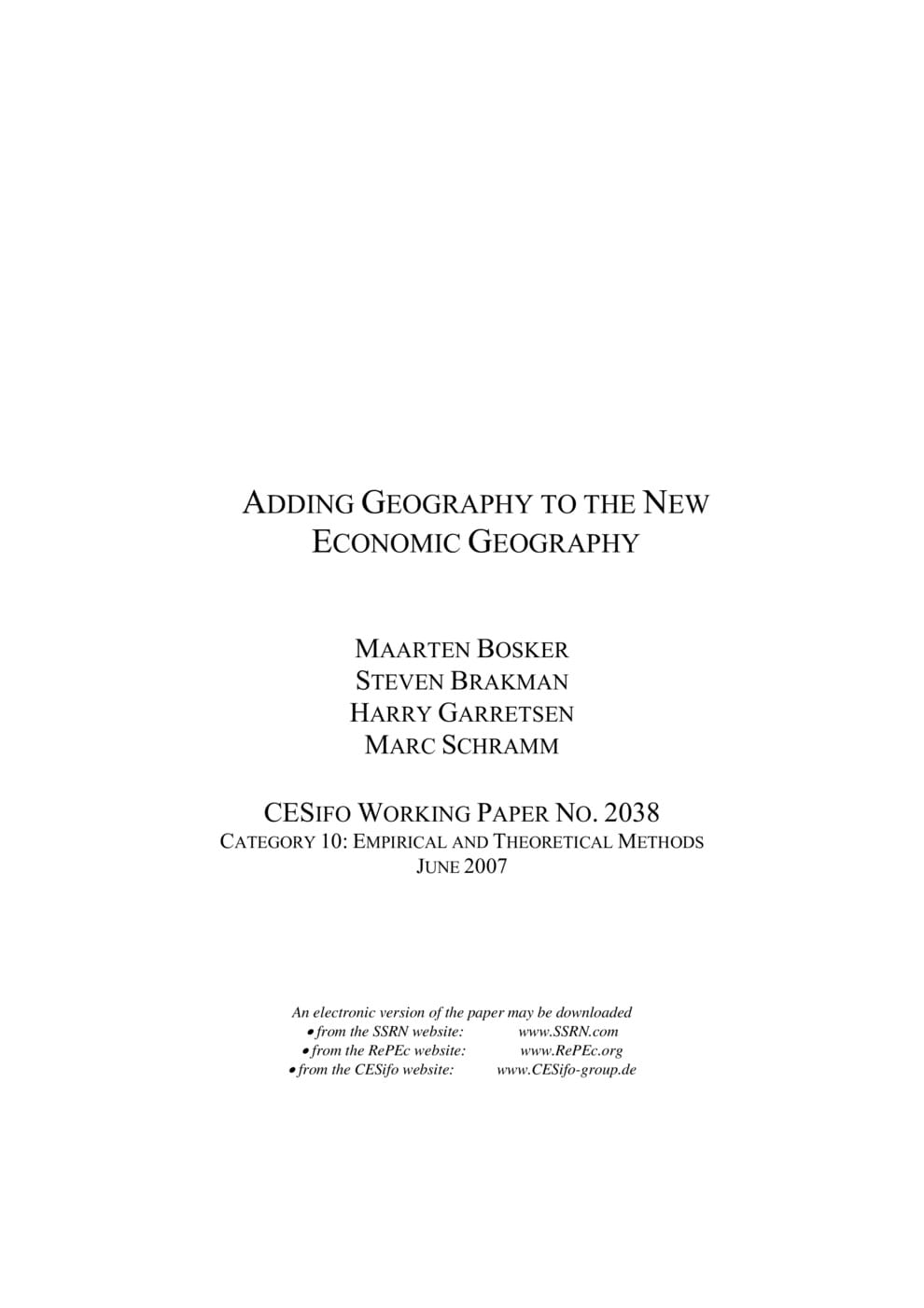Adding Geography to the New Economic Geography
CESifo, Munich, 2007
CESifo Working Paper No. 2038

For reasons of analytical tractability, new economic geography (NEG) models treat geography in a very simple way: attention is either confined to a simple 2-region or to an equidistant multi-region world. As a result, the main predictions regarding the impact of e.g. diminishing trade costs are based on these simple models. When doing empirical or policy work these simplifying assumptions become problematic and it may very well be that the conclusions from the simple models do not carry over to the heterogeneous geographical setting faced by the empirical researcher or policy maker. This paper tries to fill this gap by adding more realistic geography structures to the Puga (1999) model that encompasses several benchmark NEG models. By using extensive simulations we show that many, although not all, conclusions from the simple models do carry over to our multi-region setting with more realistic geography structures. Given these results, we then simulate the impact of increased EU integration on the spatial distribution of regional economic activity for a sample of 194-NUTSII regions and find that further integration will most likely be accompanied by higher levels of agglomeration.
Empirical and Theoretical Methods